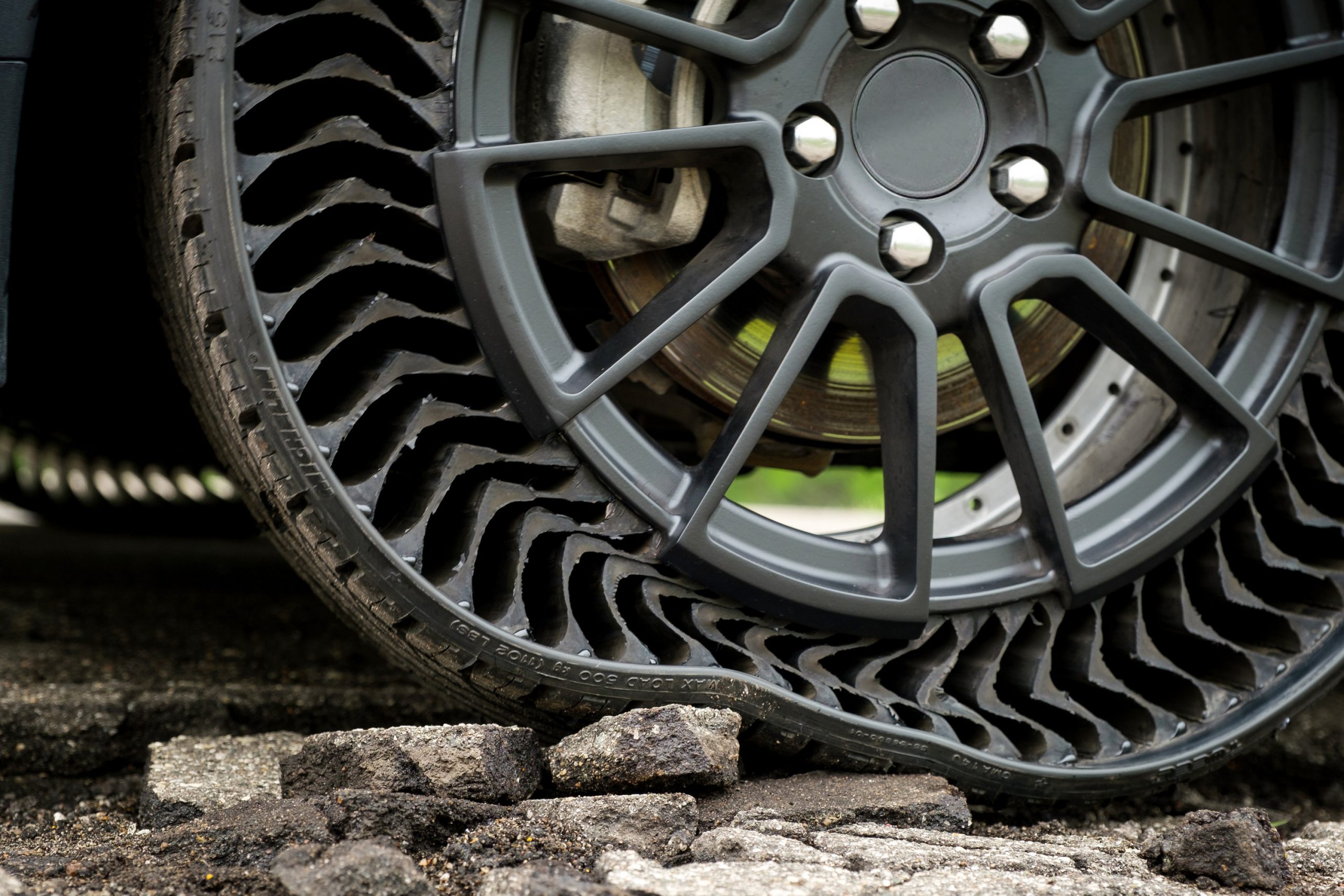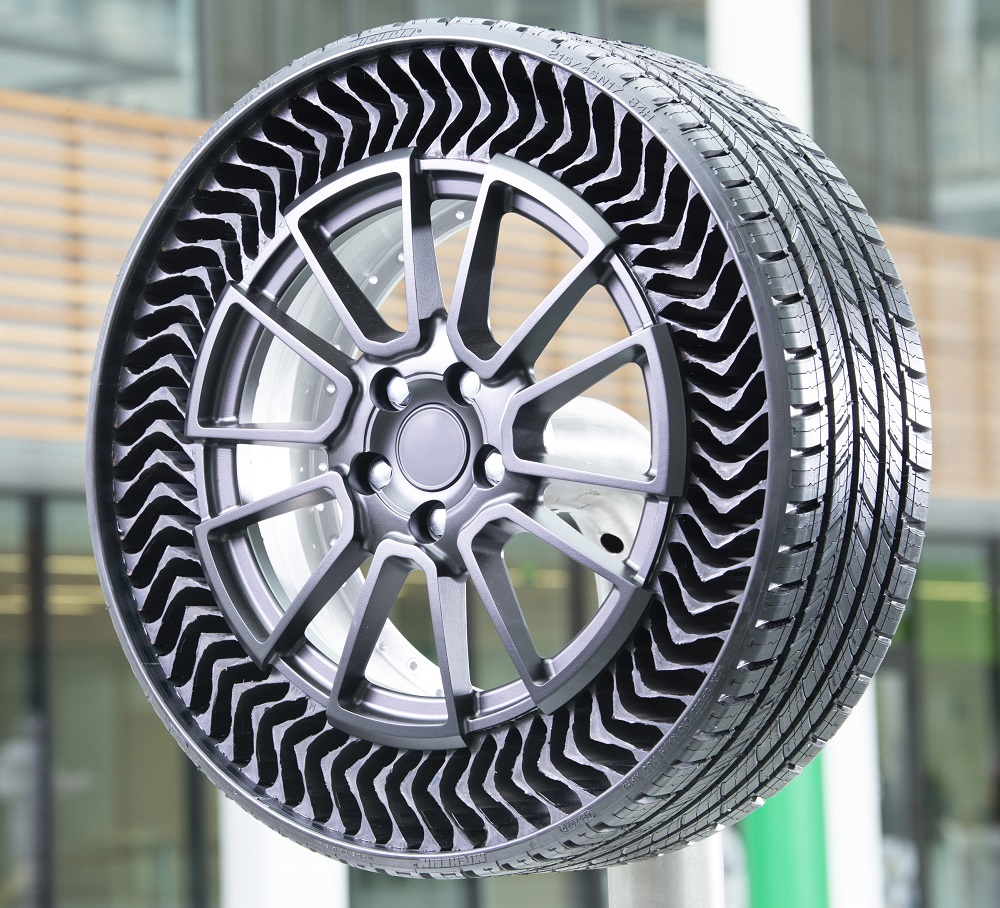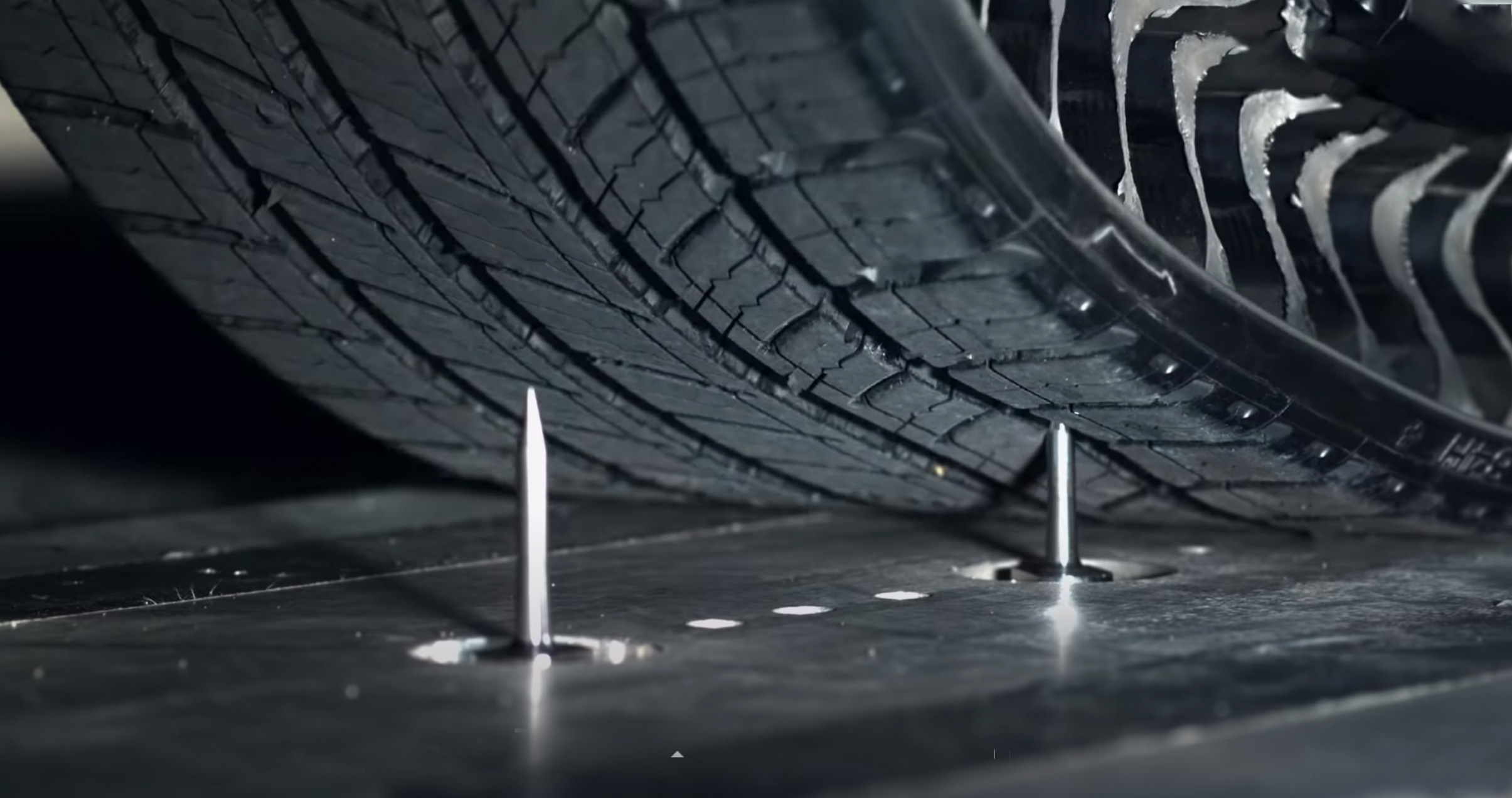The 2021 3D Printing Industry Awards shortlists are open for voting, have your say now.
French tire manufacturer Michelin has reached a new milestone in the development of its airless Uptis (Unique Puncture-proof Tire System) tire, having carried out successful road tests.
As part of Michelin’s VISION concept, if Uptis goes to market in 2024 as planned, drivers would be able to 3D print the tread and adapt the tires according to their driving, seasonal weather conditions, and to self-maintain the general health of the tire.
3D printing has already been used to create the prototype of the tire, however further details on the additive manufacturing technologies involved and the extent to which they will be used in the future, remain to be seen.

An airless, biodegradable concept
Michelin first proposed the Uptis concept tire at its International Mobility Summit, Movin’On, in 2017. The tire was designed to be airless in order to eliminate punctures while being biodegradable and equipped with sensors for real-time monitoring.
The tire’s airless interior design is based on an alveolar structure such as that found in lungs, which feature intricate internal geometries suited to 3D printing. To create the prototype for the show, Michelin worked with automotive manufacturer General Motors to 3D print the concept tire.
Ultimately, Michelin is seeking to reduce the number of tires thrown away due to punctures, which, according to an in-house “scrapyard survey”, amounts to some two million tons, or 200 times the weight of the Eiffel Tower. The firm believes its Uptis tire could avoid this waste altogether thanks to its airless nature and “rechargeable” potential.
The tire’s “rechargeable” concept is the most interesting element of the design from an additive manufacturing perspective, and could see drivers reprint their tire treads by the roadside.

Uptis’ rechargeable tread
Through its VISION concept, Michelin is aiming to make mobility safer, cleaner, more efficient, and universally accessible. The concept demonstrates how the company’s sustainable development model hopes to transform tire manufacturing between now and 2050, the date by which the EU aims to be climate-neutral.
The four pillars of VISION are Airless, Rechargeable, Connected, and 100 percent Sustainable. To meet its Airless goal, Michelin is developing technology that eliminates the risk of flats and rapid pressure loss to improve safety and comfort, while reducing the environmental impact of tire wastage.
The Connected element of VISION sees the Uptis equipped with numerous sensors to usher in a “new era” of service, comfort, and safety for motorists, while its Sustainable pillar sees Uptis manufactured by biosourced and recycled materials in order to ensure the environmental footprint of the tire’s lifecycle is minimal.
Finally, and hailed by Michelin as one of the “most revolutionary” aspects of its VISION concept, is the Rechargeable commitment. According to the company, having a tire with a 3D printed tread makes it possible to deposit just the right amount of rubber compound, therefore reducing the use of raw materials.
The tire can subsequently be “recharged” using a 3D printer that reprints the tire tread according to the needs of motorists. For instance, drivers might want to adapt their tires to winter or summer conditions, or simply upkeep the general health of their tires as a result of wear and tear.
With 3D printing, Michelin says these adjustments could be made quickly and easily via an on-demand service that could see drivers 3D print new treads for their tires by the roadside. While further details are still to come regarding which 3D printing technologies would be used, and in what capacity, it seems 3D printed roadside repairs could become reality when the tire comes to the market in 2024.
Michelin already uses metal 3D printing to design and create multiple products, including the components of tire molds. Going forwards, the company will leverage this expertise further to explore rubber 3D printing to offer its recharging concept for tire treads.

Test driving the Uptis
The latest development in Michelin’s VISION has seen the Uptis transfer from concept to the road. Automotive YouTubers Mr. JWW and Gercollector were brought in to test the prototype Uptis in real-life conditions on public roads.
Both offered substantial praise for the tire, said Cyrille Roget, Michelin Group Technical and Scientific Communications Director: “Our greatest satisfaction came at the end of the demonstration when our passengers said they felt no difference compared with conventional tires.”
Subscribe to the 3D Printing Industry newsletter for the latest news in additive manufacturing. You can also stay connected by following us on Twitter and liking us on Facebook.
Looking for a career in additive manufacturing? Visit 3D Printing Jobs for a selection of roles in the industry.
Subscribe to our YouTube channel for the latest 3D printing video shorts, reviews and webinar replays.
Featured image shows Michelin’s Uptis tire is airless to eliminate the risk of punctures. Photo via Michelin.


